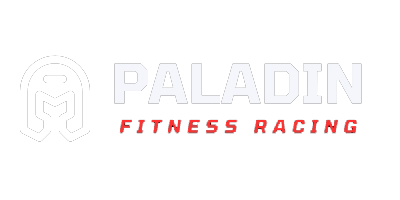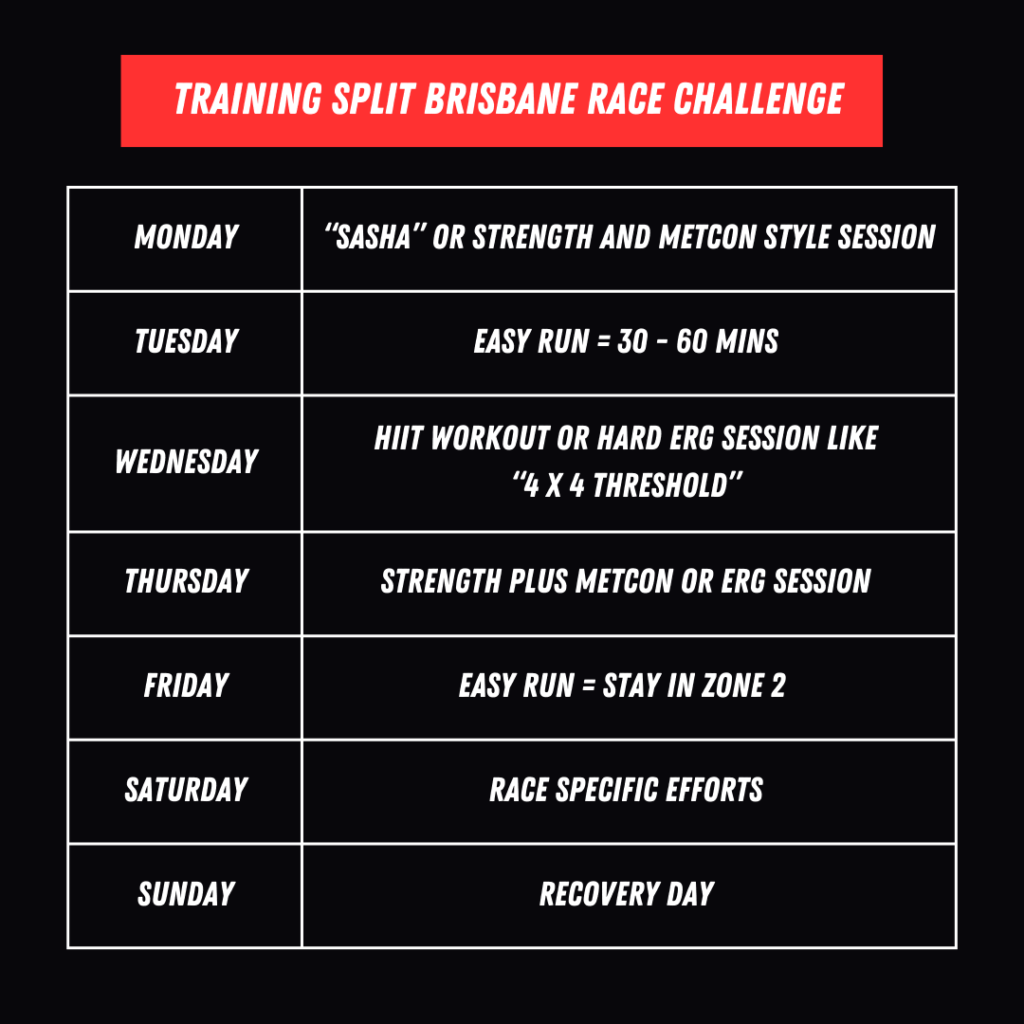
Cardio Training with Paladin Fitness

The Perfect Training Split
We are not even sure if the perfect training split exists, as there are always so many moving parts and athlete variabilities, but we are very confident if you get the right amount of volume, quality, intensity and recovery, you will have a great race.
Below is a guide for a participant approx 6 weeks out from the competition. We believe this split works well for the functional or hybrid athlete and will get you close to peak performance on race day. We understand everyone has different time availability, fitness levels, and goals, so take this as a guide only.
* Monday – Strength and Metcon (something like our “Sasha” workout or a Perform session at Fitstop)
* Tuesday – Easy run focusing on being relaxed and keeping the heart rate low. Depending on fitness level, this run should last 30 – 60 mins. Finish with abs and a good cool-down stretch.
* Wednesday – HIIT-style session or running session like 10 x 400’s or solid Paladin erg workout like the ‘4 x 4 Threshold’. Finish with some race-specific movements that you want to improve, e.g., 5 x 10 burpees with 30 seconds of rest between sets. This and Saturday are your harder efforts.
* Thursday – Strength and Metcon session. This should include movements from the race, but ensure you are not going full gas here; focus on technique and efficiency.
* Friday – Easy run or long easy cardio efforts on ski or rower, again focusing on keeping heart rate within zone 2. If in doubt, slow down!
* Saturday – Race-specific efforts. You can break the race into parts and hit these with the same intensity as expected on race day. For example:
– Warm up = 1 -2km row easy pace here
– Workout = 4 – 5 rounds with 1 min rest end of each round
– Cool Down = 1 – 2km Row
1. 15 cals on Ski or Bike
2. 30 x Alternating Lunges
3. 15 x Ground to Overhead
4. 15 x Butterfly sit-ups
5. 10 x Plate Thrusters
6. 10 x Burpees
7. 400-metre run
* Sunday – Rest day
At Paladin Fitness, every sweat-drenched session brings you closer to triumph. Whether you’re gearing up for your first race or you’re a seasoned athlete looking to smash your personal best, our training guide could be for you. Dive into our specialised workouts designed for the Rower, Bike Erg, Skierg, and Run, and prepare to unleash your inner champion. Let’s get to it!
There are a number of fitness modalities that you can choose to improve with any one or all of the following movements. We suggest, as a minimum, that you train your aerobic engine 2 times per week and attack some hard intervals 2 times per week. Anything over this is a bonus and will not only improve your overall fitness but will get you in peak condition to smash your Paladin race. Note that training in a functional fitness facility like Fitstop, Atora, F45 or Crossfit will put you in good condition for our events, but we still recommend adding longer aerobic sessions to your training.
You can build your aerobic engine with slow and controlled rowing/cycling/running/skiing with the focus of maintaining a low heart rate. If you do not have access to a HR monitor then use the rate of perceived exertion RPE (not as accurate but still works). It’s actually amazing how much benefit you can get from going slow for longer. Not every session should be hard.